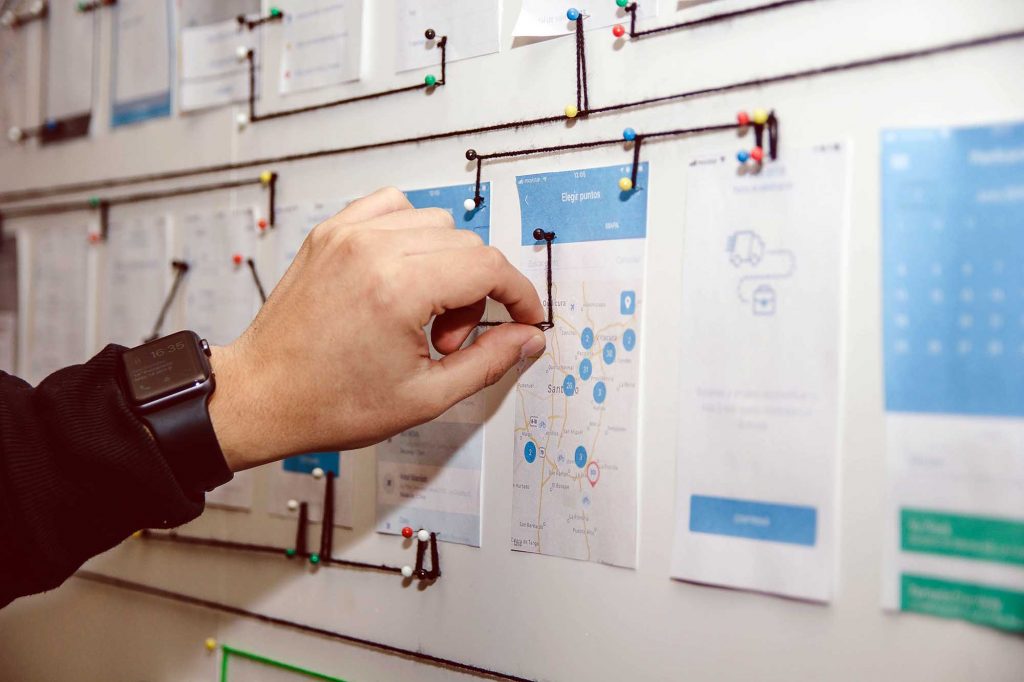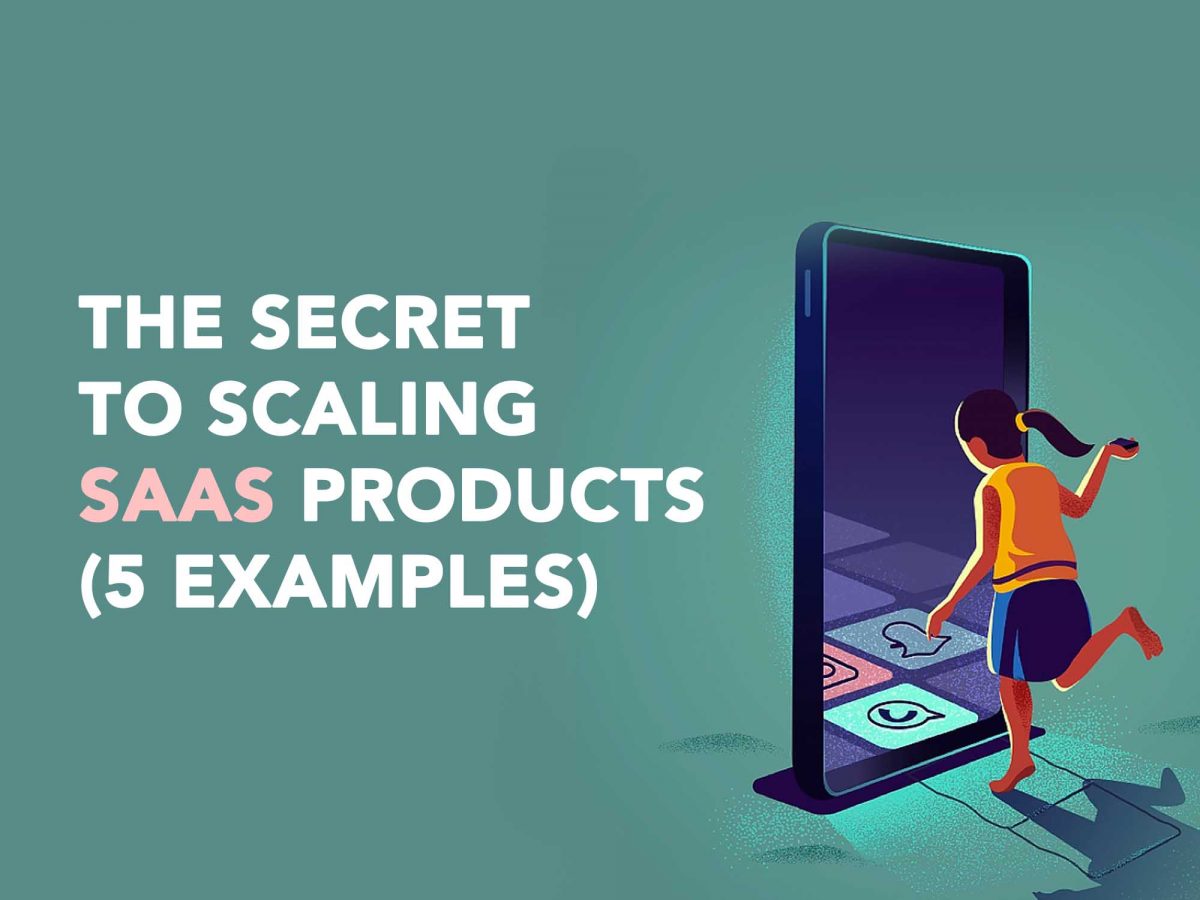“Scaleable” means you’re building your SaaS product 3, 5 or 10 times as fast as someone who’s doing the same work, but manually.
Economies of scale, they call it. We’ve seen how tech giants (along with scalable SaaS companies) are in the topmost profitable companies and it’s no wonder: technology in itself means scale.
We’ve also seen this tendency to focus only on scale, to the point where SaaS founders dismiss some ideas, simply because they can’t be scalable from ground 0.
Yet the catch is this: building a SaaS that can generate +$100,000,000 in revenue (or more) means that you come up with a scalable plan and do the unscalable work until it reaches that point.
Like a snowball.
What I said so far quickly explains an article that’s popular in the SaaS/startup industry: “Do things that don’t scale” by Paul Graham. But one question arises.
How do you know which unscalable things you should do for your SaaS business?
Here’s how I’d look at it. There’s grunt work and there’s scalable work.
Scalable work means machines do the unscalable work for you.
However, unscalable work means you can show what differentiates yourself from others. The catch?
Doing unscalable (grunt) work that can be scaled by someone else is useless. Doing grunt work that can not be scaled means you’re going to show that you’re better.
Better, by the time you’re able to put in, the passion and all the other factors that show why you deserve it. If you really want it, you’ll spend 9 hours every day on that. And slowly but surely, the gap between yourself and the competitors will widen.
For your SaaS product to reach that tipping point where you’ve done enough grunt work until it scales, you’ll need to pick the grunt work very carefully.
You’ll need to pick the grunt work that it’s further from the imminent danger or scale/automation — otherwise you’ll do it for 6 months or 2 years and in the meantime, a competitor will come up with something (or a product will come out) that will blow past your grunt work.
Need some examples? Here’s five.
1. 1-on-1 discussions about your SaaS
For instance, doing the Intercom/HelpScout or Drift’s (mentioned before in an article here) live chat bubble is cool.
But is it “futureproof”? With the advent of chatbots and how much time is spent developing that technology, I wouldn’t say so.
And let’s please be attentive to this thing: I mean future technology that will come in anywhere between 6 to 24 months. Not that usual discussion about how AI is going to take over the world, yet we’re probably decades away from that.
I mean practically imminent danger for your scalable SaaS development plans.
Leaving that aside, your unscalable grunt work might not be the most “secure” thing here, as chatbots can blow past you right now or in the next 2 years.
The conclusion?
Your 1-on-1 discussions on that live chat bubble are going good now, but soon they’re likely to be automated (up to a percentage, but which increases every few months) with chatbots.
2. Going to an event and preaching about your SaaS product

This is already blown past.
If you’d be paying $150 for a ticket to an event where your potential SaaS buyers are going, it’s unscalable grunt work that’s already outrun by something else.
Facebook ads. With those $150 you’d probably see better results with less effort and less social-anxiety-inside-combat.
The reason why you’d be going to that event is because the audience is already filtered. Unless they’re that type of people which you’re aiming at, they wouldn’t be at that event.
What do I mean by that: say your SaaS is selling to other SaaS companies. And, lo and behold, you’re planning to attend a SaaS event because that’s where the founders would spend time. So it makes sense why you’d go and talk to them.
Here’s a better alternative:
- Spend $150 targeting these people on a Facebook ad campaign
- Leading them to a chatbot (of your company)
- Starting a “conversation” there
- Offering something to these people, thus beginning a relationship (see below)
- See if you’ve convinced them that you offer enough value so that they’ll talk on the phone with you
- Probably one sale will be worth more than $150
Say you’re going to offer an eBook, though I hate the concept — it just came quickly to mind. How are you going to do that at an event?
Or even the other thing that I dislike, “book a free consultation meeting” — once again, not doable through an event.
Since I mentioned 2 things that I don’t like, here’s one that I would like: offering a free month of your SaaS product’s subscription. Combine this with not giving away trials anywhere else and it’s set.
You’ll be in conversation with these people already — after they’ve tried your product. Win-win?
And as step #6 mentions, one ticket sale should probably be higher than $150, which would at least get your ad investment back.
Is your ticket smaller than $150? No worries, then people will have fewer restrictions to buy it, thus you’ll likely sell more than one.
3. Reaching out to those who have the problem your SaaS solves
I’ll start by explaining how to do it, and then show the status of scale (or non-scale)
How to do it
This is not looking like it’s going to become scalable anytime soon. I wrote this piece called “Voice of Customer Programmes Are For Losers”
I’m explaining there how people can find both:
- A) A problem to solve
- B) The people who have this problem
Say you want to build the Dropbox killer. Or your product is in competition with Dropbox and you want to CRUSH them.
I’d open up Twitter and look for what creatives complain about. It’s part of human nature to complain. Everyone complains.
And what that means is that creatives (this case’s target audience) will do so. On Twitter, on Facebook, on Dribbble/Behance or wherever they spend their time (careful here, pick the place where they spend their time)
Dropbox should lean in and listen to what their people’s challenges are. And that’s a VoC programme that’s put in place without any thousand-pound investment — it’s simply a couple of searches and a major ingredient: caring about them.
Let’s do it now. I’d go on Twitter and search for: “hate about dropbox”



Then I’d sit down and talk to these people, especially the last one, which claims they can rage for days.
Because if I’m obsessed with making Dropbox better for people, I think I’ll last longer than this person when it comes to talking about it.
But once again, that needs me to care about my SaaS users.
I go on in that article and pick some other examples, say you want to disrupt Trello, Asana and/or Jira. Have a look at it.
What’s the status of this
This is something that definitely won’t be disrupted soon.
Yes, I know, there are bots that can comment for you on Instagram but they don’t leave any thoughtful comments. Far from what a scalable SaaS business would consider useful.
What does that mean? It means it’s something you can surely try to do. It’s one of those green-light grunt work you can do, which is the cornerstone idea of a lot of my articles.
4. Creating content
Not going away in the next 6 to 24 months BUT my feeling is that it could definitely be “aided” soon.
I’m pretty sure most companies see the value behind creating content — no need to convince any SaaS company about that. What about scale?
Since the differentiation happens on the intellectual level (more precisely, the usefulness of it), it’s yet another green-light grunt work that is wise to do.
Not a scalable SaaS practice, therefore you can show the difference between yourself and others. How? By putting in the time to do the grunt work.
5. Giving demos

This is a topic that’s been tackled before as a fellow member of our Reddit SaaS community asked “How to Scale/Automate your Software Demo?”
The idea is pretty simple: yes, demos are not fully scalable since they have to be in-person a lot of times. However, nothing stops your from creating a library of demos, based on your customers’ user profiles.
In other words: 4 pre-made demos (video, most likely) for 6 different types of users.
It’s indeed costly but depending on your company’s size and profitability, it’s doable. How? By creating a stupidly simple website experience, where these customers auto-qualify themselves through some questions like:
- What’s your company’s size
- What do you need X (your product) for
- How many employees do you have
- etc
These questions are not open-ended — they have pre-written answers. And they answer by clicking on big boxes. Simple and elegant.
Upon navigating these couple of questions (think of it like an onboarding system), they’ll be shown the relevant demo. Do they need more information? Offer yourself for the non-scalable meeting or phone call.
But self-qualification on the user’s end is scalable and if you do it right it can give you infinitely-valuable data. Once again, if you want to read the full story, have a look here:
The bottom line
This article came to life as the question of “What should I do that’s unscalable” is brought up. It applies to startups, to SaaS companies and in fact, the answer applies to any kind of company.
Wishing you a lot of (manageable) growth. Let me know which other scalable or unscalable things you’ve done compounded their results into your company’s success.
About Ch Daniel
I’ve updated this signature in July 2020, so older mentions of the signature might not make sense.
I currently don’t write on this blog anymore. I wrote daily for 9 months on this very blog, but now I’m focused on building the CH Group.
If you want to follow my newer articles, check out the CH Group’s blog.
See everything I do here: Chdaniel.com

Illustration credits: Ranganath Krishnamani



